OP-ED
Remembering the revolutionary life and times of Ruth First
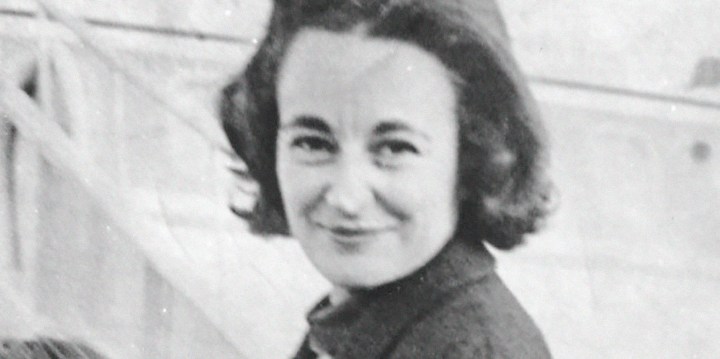
While there is much Ruth First would have been thrilled about, she would have been appalled at the state of the ANC and country today. I have no doubt she would have raised her trenchant voice against the corruption, mismanagement, appalling conditions of unemployment, poverty, and violence against women.
First published by Umsebenzi Online.
Born in Johannesburg on 4 May 1925, Ruth Heloise First was a dangerous thorn in apartheid’s flesh and marked down by the regime for elimination. She was assassinated by their hit squads on 17 August 1982 at the age of 57. Her creative ideas and scholarship, along with her inspirational life, are of inestimable value to this day.
Her parents, Julius and Tilly First, were members of the Communist Party of South Africa (CPSA), so it can be said she was a Bolshevik Baby. Julius and Tilly had arrived in the country as children in the opening decade of the 20th century, with the wave of Jewish immigrants, to meet and marry by the time the CPSA was established four years before Ruth’s birth.
They hailed from Latvia and Lithuania respectively, then part of the Czarist Russian Empire where Jews suffered from severe discrimination as generally despised second-class citizens. Such immigrants were working-class, artisans and small traders, having survived poverty and bloody anti-Semitic, xenophobic pogroms. Many, but by no means the majority, were fervently religious, but very few were Zionists seeking salvation in Palestine. If anything, the USA was what most dreamt of as a country to emigrate to; with South Africa among other destinations.
The founder members of the CPSA were a mix of radical white workers and socialists from Europe; among them SP Bunting, Ivor Jones, Bill Andrews, Solly Sachs and Julius First. By the time of Ruth’s birth, Tilly was a member, along with the first Africans to rise to prominence, JB Marks, Johannes Nkosi, James La Guma and Johnny Gomez, demonstrating the young party’s growing outreach, with TW Thibedi the first black person to be elected to the party’s central committee.
Julius First founded a furniture factory which, in later years when the party was banned, served as a refuge for comrades avoiding the police or as the venue on weekends for illegal party meetings.
Ruth grew up in a household in which intense political debate between people of all races took place. Her parents had participated in the early party discourse around the role of the white working-class; the 1922 white miner’s revolt; the Communist International (Comintern) “Black Republic” thesis which led to an upsurge in African membership; the purge within the CPSA during the 1930s; revival of party activity during World War II and its support for Russia.
Inevitably these events impacted on Ruth – hearing her folks going over such arguments with comrades as she was growing up. But, by then, when she was a teenager, the robust debates had changed with the influx of black workers into its ranks – and the party was strategising on the link between national liberation and socialism, which crystallised when she became a prominent member in the 1950s.
The political economy of South Africa had undergone a seismic transformation by the time Ruth was born; the consequences of which shaped the times. The discovery of gold a mere 39 years previously – and the Mining Revolution as a consequence – profoundly changed the country and its people. Johannesburg was a young, brash city, fast-growing and urban, a melting pot of people with harsh exploitative conditions facing the black population, many living in shantytowns on the periphery, with the dominant mining houses, Randlords and pro-British influence ruling the roost.
The South African War, essentially between Boer and Brits for control over resources and wealth; the emergence of an African proletariat and the challenge to white supremacy and capital by the awakening giants of black labour; trade unionism and African nationalism; shaped the responses of revolutionaries of all stripes.
The dual cleavages of class and colour in the country were reflected in the existence of the leading proponents of class and national struggle, initially set on different paths, which converged in the struggles to come – namely the CPSA and the ANC. The leading comrades of Ruth’s generation were central to the debate about the road to national and social emancipation; two stages or one; alliance with the ANC or not; and development of Colonialism of a Special Type (CST) and the National Democratic Revolution (NDR) as the road to power.
At the height of the struggle in the 1950s, in which Ruth First played a central and significant role, issues were resolved not from any ivory tower, nor through purist notions, but through the harsh school of practical struggle which saw the routes of Class and National response converging into a unique alliance between communists and nationalist revolutionaries – an achievement not seen to such a degree in other anti-colonial struggles.
I would go as far as stating this was one of her most influential achievements. Her handling of such relationships – a woman tutoring the foremost African revolutionary males of the day in theory and standing shoulder-to-shoulder in struggle – is testament to her insight, courage and ability.
Following the banning of the CPSA in 1950, she was part of the trusted circle reviving the party in its clandestine form as the SACP. As a journalist, she was searing and tireless in exposing the brutality of apartheid and was at the frontline of reporting on the Defiance Campaign.
Ruth was a leader of the Congress of Democrats (COD), which she helped establish in 1953 – the small grouping of whites aligned with the ANC, Indian Congress, Coloured People’s Congress, and the South African Congress of Trade Unions (SACTU).
But for a government banning order, she would have attended the historic Congress of the People at Kliptown in 1955. From the shadows she assisted in formulating the Freedom Charter. Together with Joe Slovo, who she married in 1949 – and who had become a top advocate – she was part of the 156 accused in the marathon Treason Trial (1956-1961).
Ruth matriculated at Jeppe Girls, in an education system designed to churn out white youngsters loyal to British ruling class traditions and ideology – something she was inoculated against.
By the time she started a sociology degree at the University of the Witwatersrand (Wits) in 1942, Ruth had joined the Young Communist League (YCL). Among her fellow students were Nelson Mandela, Eduardo Mondlane (later president of Frelimo, the Mozambique liberation movement), JN Singh and Ismail Meer, who became leaders of the South African Indian Congress; and later Joe Slovo, who was studying law after a stint in the army in Italy.
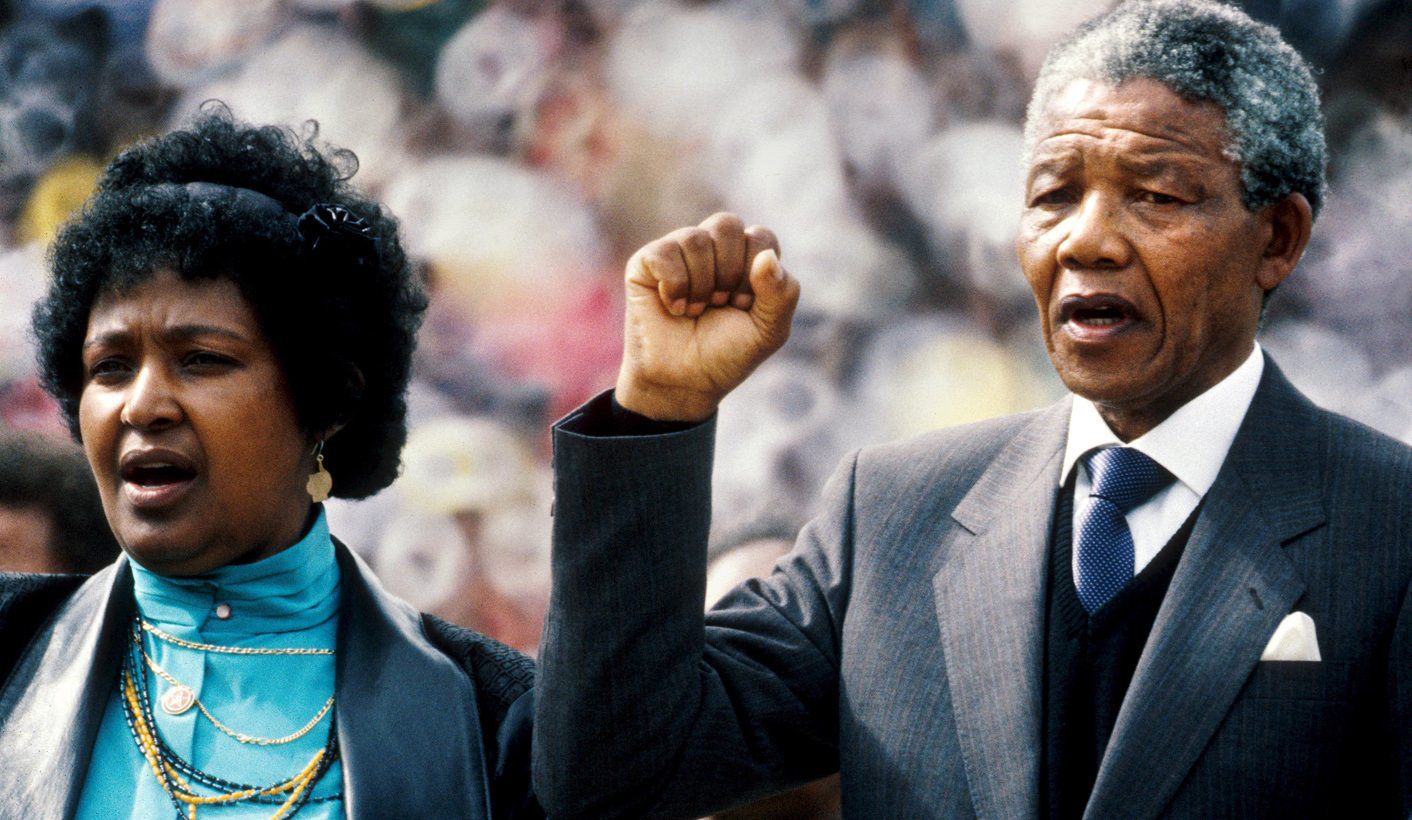
Nelson Mandela gives the clenched fist salute as he stands with his wife Winnie Mandela during his ‘Welcome Home Rally’ in Soweto, 13 February 1990. (Photo: EPA-EFE / STR)
Lifelong communist Norman Levy, then aged 14, describes the impact she made on him when he attended his first YCL meeting in 1944, after Ruth had become national secretary: “I still see her image as she was at that first meeting,” he wrote 50 years later. “Eighteen, curly-haired, short and ill at ease, pursuing her points at breakneck speed. She was earnest, self-conscious, and miserable with caring, but it was her energy and directness that marked her out from others.” (Norman Levy: ‘The Final Prize – My life in the anti-apartheid struggle”; South African History Online, 2011, pp. 14-15; in my view one of the finest memoirs of the genre – RK).
She graduated with a first-class BA (Social Studies) from Wits in 1946. Ruth was never destined to be an ivory tower academic, but was driven by Marx’s maxim: “understand the world and change it.” After a short stint as a researcher for the Johannesburg city council, also teaching African workers in the party’s evening school, she was drawn into journalism, working for the CPSA journal, The Guardian.
That crusading, socialist weekly became increasingly supportive of the ANC-led liberation movement, with communists keeping it running. For a decade it survived consecutive banning orders by way of adroit name changes, and its devoted editorial staff, with its most famous masthead that of the New Age.
The head office was in Cape Town under the editorship of Lionel Foreman, followed by Brian Bunting, editor-in-chief until the final banning in 1962. By then New Age had briefly endured as Spark. Ruth headed the Johannesburg office; Govan Mbeki was in charge in Port Elizabeth, and MP Naicker manned the Durban premises. These journals reflected the Leninist definition of a newspaper as an organising weapon.
It was Ruth’s exposé of what came to be referred to as the Farm Labour Scandal, working with rural struggle stalwart Gert Sibande and her protégé Joe Gqabi, that demonstrated her research-based, investigative journalism, writing skills and steely determination. This brought to the surface the cruel system run by the police and magistrates, consigning luckless pass law offenders to work as virtual slave labourers on white farms such as the Bethel potato farms. Researching and skilfully breaking the story, and fuelling a protest campaign, epitomised what a weekly newspaper like New Age was capable of.
Her writing on such topics as the Defiance Campaign, the mobilisation and consultations leading to the adoption of the Freedom Charter, the women’s anti-pass protests, migrant labour system, bus boycotts and slum conditions, are considered among the finest pieces of social and labour journalism, and marked the upsurge of resistance in the 1950s.
Concurrently she edited the monthly journal, Fighting Talk, which provided penetrating political analysis as well as carrying literary contributions. This latter role illustrated Ruth’s ability to draw in cultural figures like Nadine Gordimer, Barney Simon, Drum writers and poets, and jazz musicians. Both she and Joe were extremely sociable, developing life-long friendships, and their home in Roosevelt Park, Johannesburg, was the scene of many joyful parties where black and whites had rare moments of chilling out together – while agitated police would glare from outside and take down car registration numbers.
As experienced by many Struggle households of those times, police raids and the banning and arrest of parents, unsettled the children. There were no exceptions when it came to the Slovo family. By then, Joe and Ruth had three talented daughters – Shawn, Gillian and Robyn – all attaining successful careers as prolific writers and filmmakers in later life.
Following the Sharpeville massacre on 21 March 1960, and the state of emergency, Ruth and her young daughters sought refuge in Swaziland, while Joe was detained with hundreds of others. When the emergency was lifted, they were reunited back home, with the situation becoming more challenging and demanding further sacrifice.
16 December 1961 heralded the birth of uMkhonto weSizwe (MK) in which Joe Slovo – later chief-of-staff in exile – was the dual commander on behalf of the SACP, along with Mandela. Walter Sisulu’s radio broadcast message from underground was partly her writing.
Following the Rivonia arrests, she worked covertly alongside Bram Fischer and Hilda Bernstein to assist and link those in hiding. While Joe was abroad on a mission arranging training and weapons for MK – thus missing being arrested at Rivonia – time was running out for Ruth. She was arrested in August 1963 under the 90-day Detention Act and held in solitary confinement for 117 days. This later became the subject of a book with that title. This was an arduous experience of mental torture which she battled to survive, but emerged without providing a shred of information to her tormentors.
She had been told by a security officer: “You could have been charged in the Rivonia case. But we didn’t want a woman in that case.” Fortunately, her mother was available to care for the children. Tilly’s husband, Julius First, who had helped finance the purchase of the party’s underground Rivonia farm headquarters, had fled into exile.
Ruth had no option but to follow on an exit visa with her mother and the children, meaning they were forbidden to return to South Africa. They would join Joe in London. With the effective smashing of the underground inside South Africa, there was no alternative but to live and work in exile – to fight another day. Only none thought it would be as long as another 25 years.
The Slovo family set up home in Camden Town with Julius and Tilly as neighbours, and the young girls having to restart their schooling in new, strange surroundings – not easy for parents and children. They were, however, a tightly knit family unit, and it was clear to observe, as I did working closely with Joe, what a secure and loving home Ruth and Joe were able to create, despite both parents being so politically and academically active with much travelling required from both of them – more especially Joe – with his party work abroad.
For six years Ruth commuted between London and Durham where she lectured in developmental studies. She mixed well with leading left academics, among them Marxist professor Ralph Milburn; British Communist Party author on Africa, Jack Woddis; the American writer William Pomeroy; South African exiles Ronald Segal and Ros Ainslee; and Vietnam solidarity organiser Tariq Ali. She also worked closely with her comrade and colleague Harold Wolpe, developing new theories about South Africa’s economy.
She showed an interest in the rising New Left thinking and activity, and, unlike many in the exile ranks, sought to interact with them to test and refresh her Marxism and understand their viewpoint.
This drew criticism from within the party and she was cold-shouldered by some. It is not true, however, that she was ever suspended from the party. She became critical of the Soviet Union, questioning its bureaucratic nomenclature, and the 1968 intervention in Czechoslovakia. She was affronted that there were so few women in the Soviet central committee, which at times numbered several hundreds of members; certainly, in 69 years of the USSR’s history, not a single woman served on its Politburo.
On one occasion, she hammered me on why, in wartime, there had been heroines like Ludmila Pavlichenko, the anti-Nazi sniper who had a count of 309 kills to her credit. She was a particular hero of mine from my military training in Odessa in 1964, yet apart from a single woman cosmonaut, Valentine Tereshkova, there were none to be seen in top political positions.
I readily admit that at times Ruth gave me a hard time, but came to realise that if she spoke harshly it was because she was ready to be severely criticised herself. I sulked over the Pavlichenko tirade, but then she surprised me with a charming presentation of a Woody Guthrie recording of his song in praise of “Miss Pavlichenko well known to fame”.
Op-ED: Ruth First, validating dissent and building a democratic consensus
Ruth regarded herself as a “late bloomer” regarding feminism, but never became fervent about identity politics. She certainly motivated and encouraged young women in their activism and they were greatly inspired by her, but then so were the young male cadres. If anything, Ruth did not want to be consigned to women’s politics. Throughout her political life, she was at the forefront of the movement, and not by way of tokenism owing to her gender.
There are some who mistakenly view her as a “dissident” or “dissenter” or “individualistic free thinker” because she was unafraid of raising awkward questions or breaking new ground, when others remained stuck in a groove, simply repeating old slogans. Ruth’s was the Marxism as developed and advocated by Marx. A dialectical understanding that theory needed developing with ever-changing conditions: “ask questions and doubt everything.”
Ruth’s period in Britain saw her writing at its most prolific. She was instrumental in establishing The Review of African Political Economy in 1974, focusing on the political economy of inequality, exploitation, and oppression.
In 1977, Ruth jumped at the chance to work in Africa, when Frelimo sought her out to run the Centre for African Studies at the Eduardo Mondlane University in Maputo. This exciting new chapter in her life, from 1977 to 1982, saw her closely involved with the ANC in Maputo, addressing meetings and assisting young cadres involved in reconstructing the underground within South Africa. Ruth was in her prime and living in an apartment with Joe. Everyone assumed he would be the prime target for the murderous apartheid regime.
The life of this extraordinary woman was cut short by a cowardly parcel bomb which she opened in her office on 17 August 1982. It was part of a growing number of assassinations by apartheid hit squads, and followed the murder a year earlier of her New Age protégé, Joe Gqabi in Harare. There was an outpouring of grief internationally, with 3,000 mourners attending her funeral in Maputo.
In his funeral oration, Moses Mabhida, general-secretary of the SACP, declared: “The bomb that took Comrade Ruth’s life was intended to deprive our movement of the services of one of its most gifted militants. We openly acknowledge the exceptional gravity of the loss to us caused by her death. But we equally proclaim that her immense contribution to our movement will never be lost, but will help to guide our actions and inspire our militants in the years to come.”
We still grieve for the life of Ruth First, who would have been 95 this year – a year in which three of her close comrades-in-arms died: Denis Goldberg, Andrew Mlangeni and John Nkadimeng. The latter two worked with her in Johannesburg, while Andrew Mlangeni was one of the comrades who hid out at her father’s factory when the police were on his tracks. She worked with John Nkadimeng in Maputo.
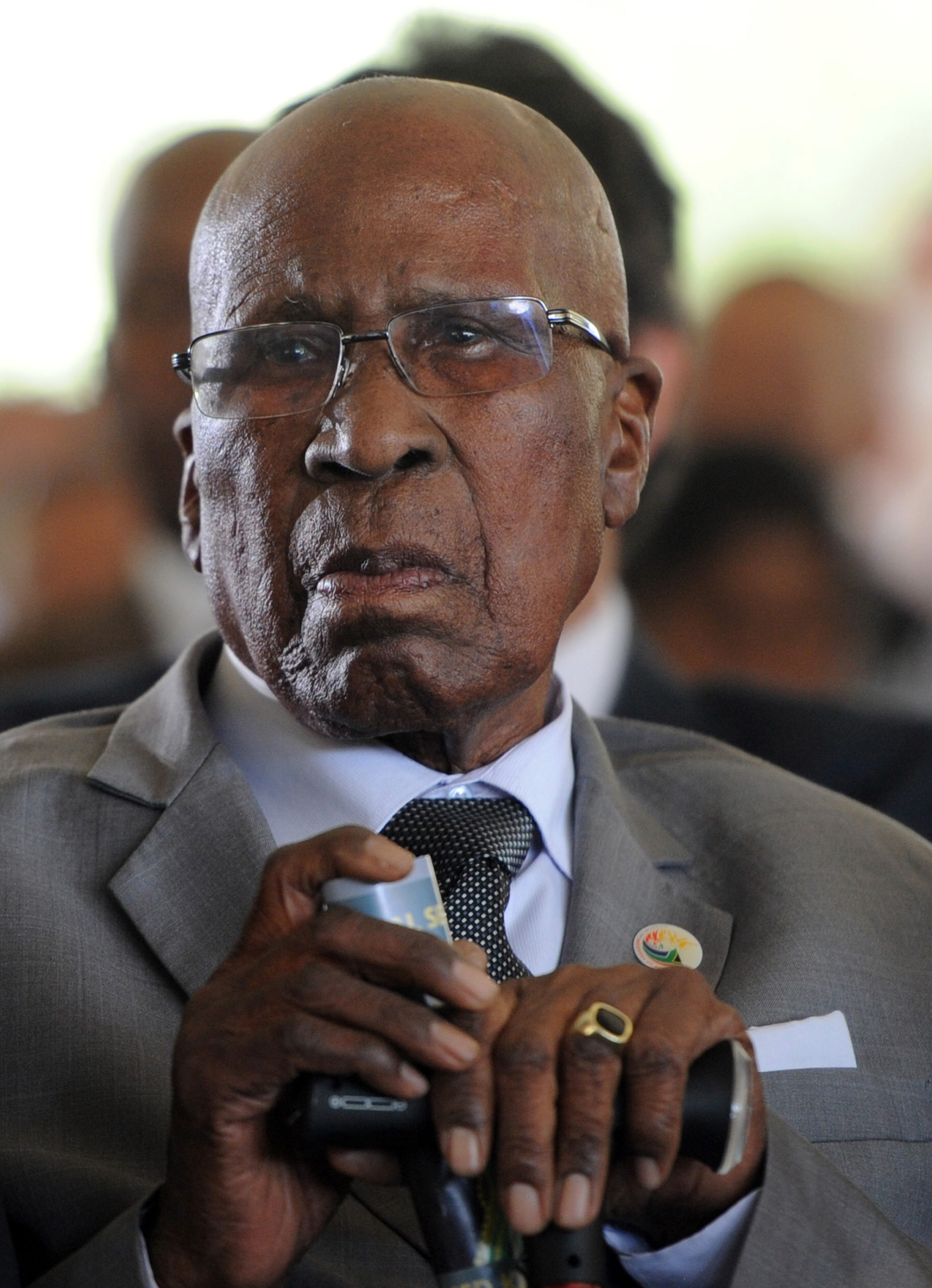
Andrew Mlangeni. (Photo: Gallo Images/ Beeld / Felix Dlangamandla)
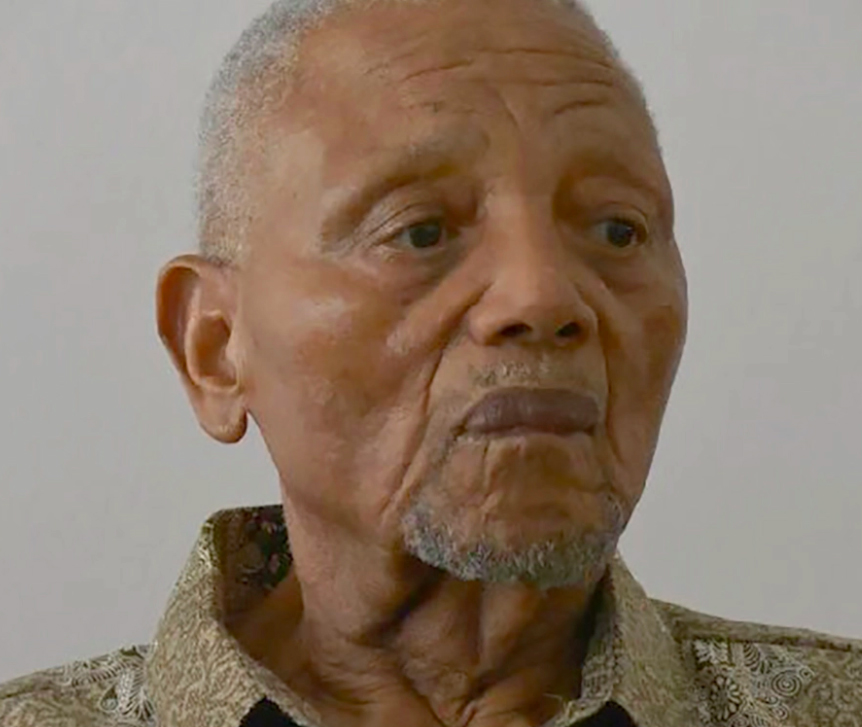
John Nkadimeng. (Photo: Twitter / @KathradaFound)
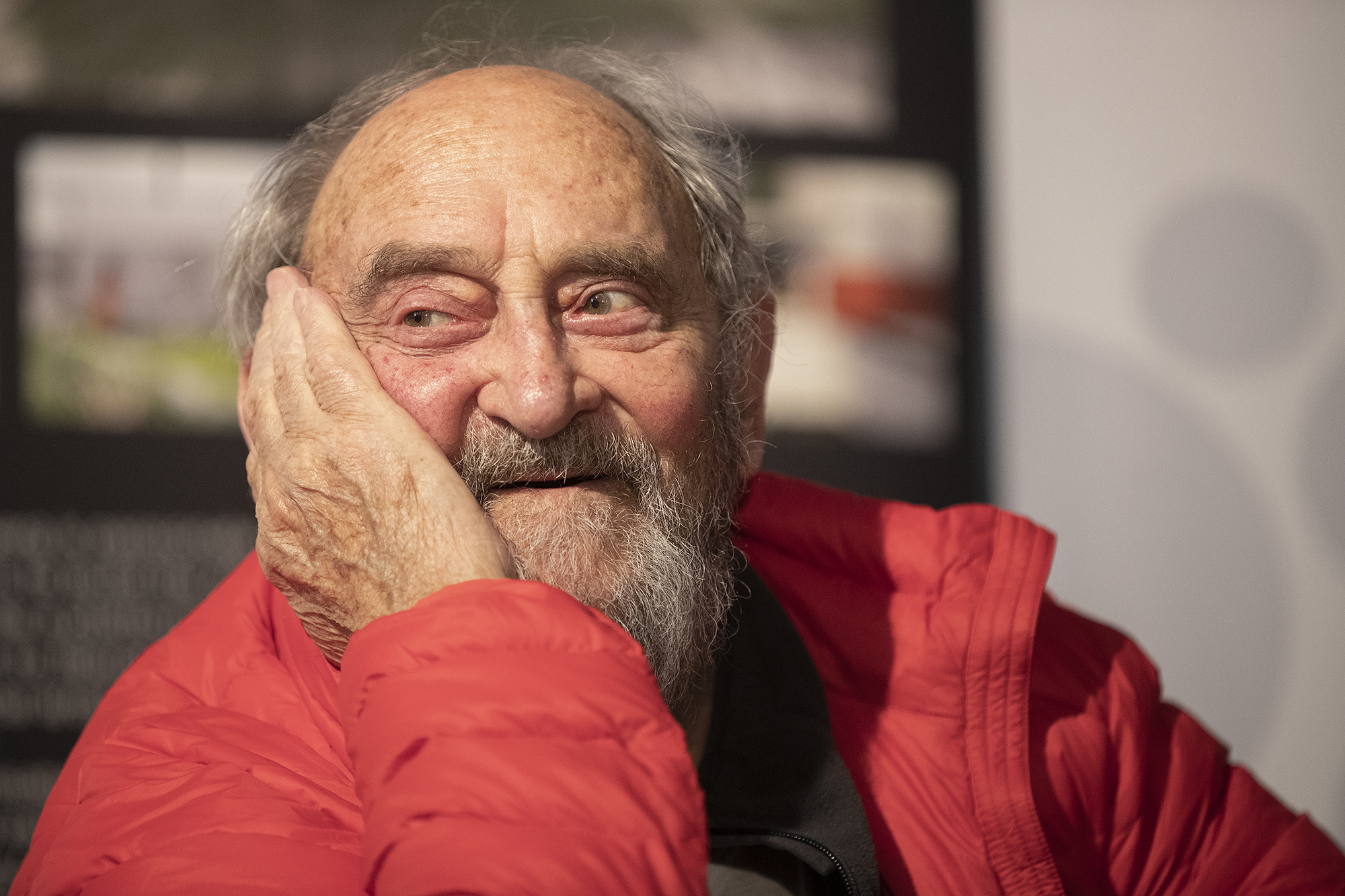
Denis Goldberg. (Photo: EPA-EFE / Nic Bothma)
While we pay tribute to her, as we honoured those heroes recently, can we say in all honesty that the assurance given by Moses Mabhida at her graveside 38 years ago, is being carried out by the movement she gave her life for? To repeat the commitment: “that the struggle you so loved will be carried out with all determination and intensity.”
While there is much Ruth would have been thrilled about, including the ANC’s insistence on the elevation of women to high government posts and in Parliament, without question she would have been appalled at the state of the ANC and country today. I have no doubt that she would have raised her trenchant voice against the corruption, mismanagement, appalling conditions of unemployment, poverty and living conditions of the poor, the violence against women.
Given her analytical mind, that analysis would not have simply stopped at the Zuma years of plunder, but would certainly have interrogated the decisions taken that brought about the demise of the Reconstruction and Development Programme (RDP), the introduction of the Growth, Employment and Redistribution (Gear) policy, and the lurch into the grip of corporate capital’s free market, neo-liberal economy.
She would certainly be involved in a bold Marxist discourse about an alternate socioeconomic model, not only for our country but for Africa and the world. And that would include not only issues facing women and the poverty-stricken, but a planet and ecosystem endangered by climate change and environmental destruction.
What would have alarmed her, too, would be the failure of our country to act more decisively on the situation in Zimbabwe, and the rising threat of ISIS terrorism in the north of Mozambique.
While one cannot think for the dead, at least the living – in learning from invaluable lessons and legacies – must carry on the struggle she and her generation were so committed to, with determination, intensity and integrity. In doing so, to be guided by such ideas that energised and propelled her: “understanding the world to change it”; “asking questions and doubting everything”; and proceeding from the “concrete analysis of the concrete situation”.
On the anniversary of her death, as I was preparing this lecture, I heard an African American artist and activist, Faith Ringold, a supporter of the Black Lives Matter rebellion sweeping the USA, stating: “It’s harder to be a woman than black.” On that same day, Wits student Kwasa Zozo was brutally murdered by her boyfriend.
Ruth’s struggle to change the world continues. Her life is exemplary for men as well as for women, young and old, who wish to understand the world and change it. DM
Ronnie Kasrils is a former member of the SACP Central Committee and Political Bureau. This article is based on, and is an edited version of, a lecture he presented to the Jack Simons Party School on 23 August 2020. The video recording of the session is accessible from the SACP TV/YouTube Channel archives: https://www.youtube.com/watch?v=LDKkBIJaRFA
To read a collection of writings by Ruth First, visit The Ruth First Papers at http://www.ruthfirstpapers.org.uk/
For biographical details, and further references: South African History Online, and Ruth First, validating dissent and building a democratic consensus, Raymond Suttner, Daily Maverick, 28 August 2017.

















 Become an Insider
Become an Insider